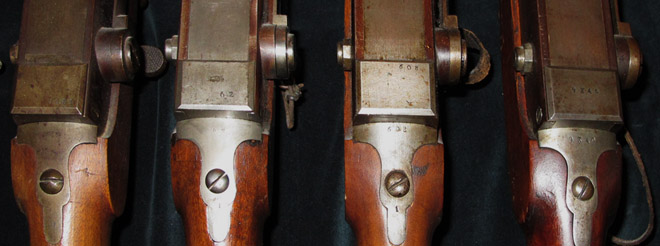M1855 Army kammerlader
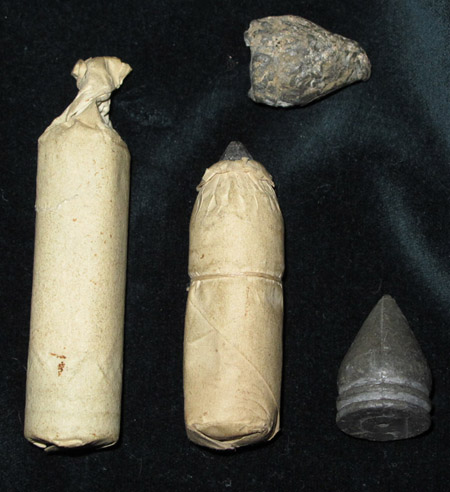 By the late 1840s to the mid 1850s one started experimenting with pointed bullets. The pointed bullets had great advantages compared to the round ball, but also had clear disadvantages until one could fid the correct shape of a new bullet. A capt. Tamisier designed a bullet with two ridges in the rear that seemed to be the best, although is was about 30 % heavier than the old round balls that had been used. The problem was that while the new bullet had a better accuracy it, due til the increased weight, also had a more curved path. New sights were demanded.
By the late 1840s to the mid 1850s one started experimenting with pointed bullets. The pointed bullets had great advantages compared to the round ball, but also had clear disadvantages until one could fid the correct shape of a new bullet. A capt. Tamisier designed a bullet with two ridges in the rear that seemed to be the best, although is was about 30 % heavier than the old round balls that had been used. The problem was that while the new bullet had a better accuracy it, due til the increased weight, also had a more curved path. New sights were demanded.
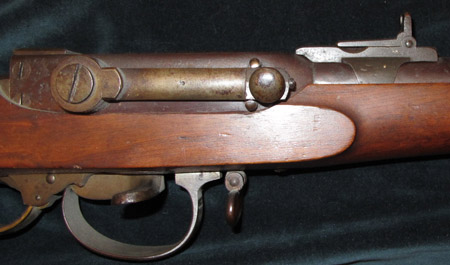 In May 1855 a new sight was approved and it was decided that all army kammerladers should have this new sight, also the older ones. And they really meant all – finding a pre 1855 army kammerlader with it’s original sights is probably more difficult than finding the Holy Grail! The new pointed bullet were the only ones to be used by the Norwegian army
In May 1855 a new sight was approved and it was decided that all army kammerladers should have this new sight, also the older ones. And they really meant all – finding a pre 1855 army kammerlader with it’s original sights is probably more difficult than finding the Holy Grail! The new pointed bullet were the only ones to be used by the Norwegian army 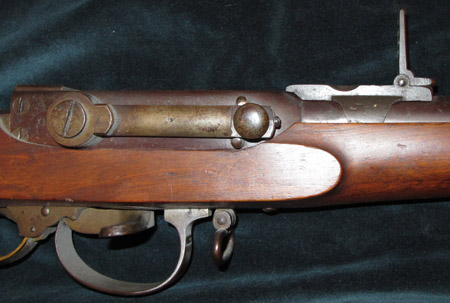 from then on.
from then on.
The new sights were rather ingenious – directly translation from Norwegian – an angled slot sight – does anybody have an English word for this? There was a built in distance measure, when you pointed the rifle at a person the slot in the rear sight equaling the persons height should be used when 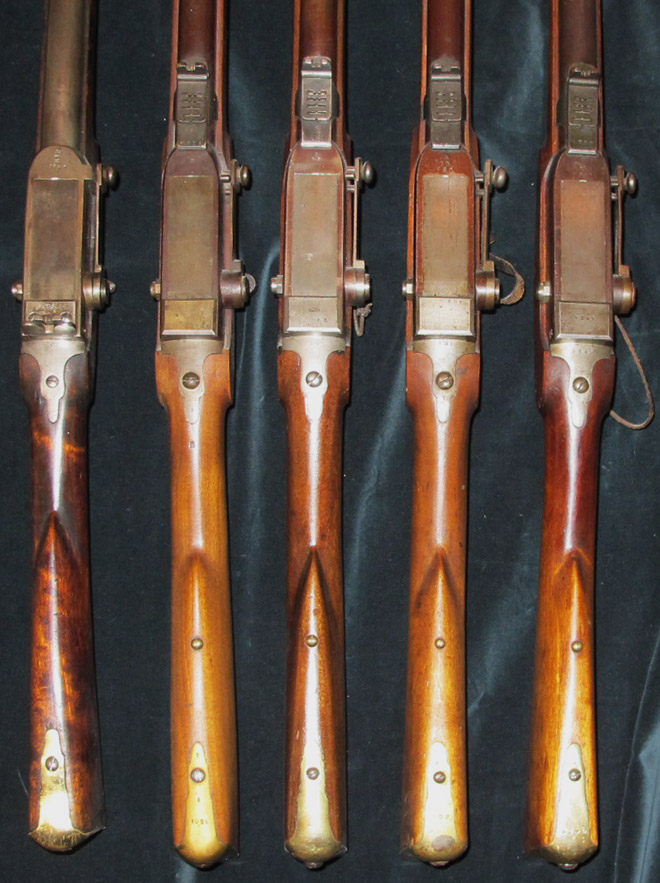 holding the eye at the brass screw on the butt of the rifle. The picture shows a “old” sighted rifle to the left, then three converted M1849/55 and a M1855 to the right.
holding the eye at the brass screw on the butt of the rifle. The picture shows a “old” sighted rifle to the left, then three converted M1849/55 and a M1855 to the right.
You get larger pictures by clicking them.
The rear sight had two positions, one for close range and one for distance. The short arm of the sight was for use up to 180 m. If the height of the person one was aiming at was lower than the square on the close range part of the sight it was to be flipped over to the long range.
The long range had four slots of different height. Here one should use the slot that equaled the height of the person. If 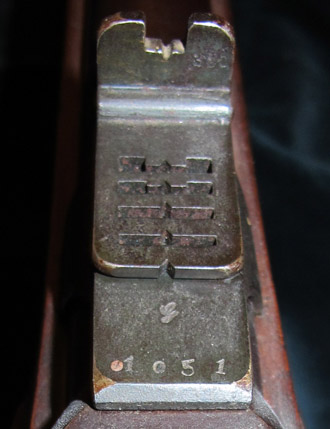 even the top slot was too high, one was to aim by the mark on the top of the rear sight. The lowest slot was for up to 250 m, second lowest for 312 m, next one for 375 m and the top one for 440. At greater distances one was to shoot over the top of the sight.
even the top slot was too high, one was to aim by the mark on the top of the rear sight. The lowest slot was for up to 250 m, second lowest for 312 m, next one for 375 m and the top one for 440. At greater distances one was to shoot over the top of the sight.
Ingenious, but crude – It would probably work on a shooting range, but in battle? Hardly! The rifle was powerful enough to penetrate 5 cm of wood at 440 m and ricochets were found more 1,5 km away from 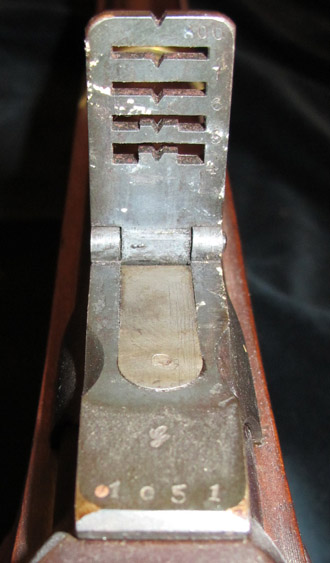 the firing point, but… using the sights as intended?
the firing point, but… using the sights as intended?
As a teenager I did a bit of “scientific” shooting with the kammerlader. At close range a German 7,92 mm Mauser would penetrate a large birch tree 32 cm, a kammerlader with 16,7 mm bore managed 26 cm. If one was hit with a bullet from a kammerlader, I don’t really think it mattered where one was hit – one would be out of action! There was a lot of energy in those bullets an my impression was that the designed enabled just about any load using black powder. Warning! That was my impression – and nothing more. Don’t try over-loading it!
How to tell the different M1855 conversions apart. The rifle to the right on the picture is a “true” M1855 and the serial number is placed in the middle of the little, square plate behind the chamber. The three other ones have been converted from the M1849. Here the serial numbers are strictly on the right hand side of the plate and one might see that these has been slotted inn a piece of metal on the plate to the left of the serial numbers. Also the serial numbers. Any number lower than 6700 is a M1849 (or older). The older models are even easier, they have the screws on this little plate.

